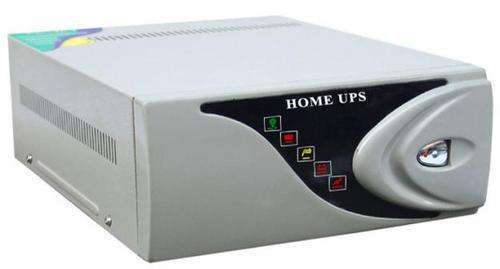
An Uninterruptible Power Supply(UPS) is an electrical apparatus that provides emergency power to load when the input power fails. Using an autonomous source of alternate power to supply sensitive electronic loads. The loads include computer centers, telephone exchanges, and industrial processes. These applications require power that is available and of good quality.
How does a UPS work?
An uninterruptible power supply is a device that allows a computer to keep running for at least a short time. This is when the primary power source is mislaid. UPS contains a battery that kicks in when the device senses a loss of power from the primary source.
However, if the user is working on the computer when the UPS notifies them of the power loss, they have time to save any data they are working on. Then, exits before the secondary power source run out. When all power runs out, any data in the computer Random Access Memory(RAM) is erased. However, when power surges occur, a UPS intercepts the surge so, that it does not damage the computer. The size and design of a UPS determine how long it will supply power.
UPS Topologies.
Different uninterruptible power supply( UPS) topologies provide specific levels of power protection. However, a cyber power UPS will belong to one of these three topologies.
Standby. Is the most basic UPS topology. A standby UPS resorts to battery backup power in the event of common power problems. However, when incoming utility power drops, the UPS switches to a DC battery power and then inverts it to AC power to run connected equipment.
A line-interactive. UPS incorporates technology that allows it to correct minor power fluctuations without switching to a battery. In addition, this type of UPS has an autotransformer that regulates low voltages and overvoltages, without having to switch to a battery.
A double-conversion. UPS provides consistent, clean, and near-perfect power regardless of the condition of incoming power. This UPS converts incoming AC power to DC, and then back to AC. A UPS generally protects a computer against four different power problems.
- Al Gore age, family, wife, children, career, books, net worth.
- Burna Boy bio-age, family, wife, children, music career.
- Prue Leith Bio, Wiki, The Great American Baking Show, Age, Education, Height, Family, Husband, Children, and Career
- David McCallum bio-family, career, tragedy, net worth.
- Kelcey Carlson Wiki, age, children, husband, net worth, Fox9.
- Musalia Mudavadi bio-wife, age, net worth.
- Huw Edwards age, wife children, depression, BBC, worth.
Voltage surges and spikes.Times when the voltage on the line is greater than it should be.
Voltage sags. Times when the voltage on the line is less than it should be.
Total power failure. Times when a line goes down or a fuse blows somewhere on the ride.
Frequency differences. Times when the power is oscillating at something other than 60 hertz.
- A list of special secondary schools, and contacts.
- The best private primary schools in Nyeri county.
- Bay head elementary school history, enrolment, programs offered.
- What is the history of Kenyatta University?
- List of best private primary schools in Kirinyaga County.
- Egerton university, fees, location, courses.
- Kenya Medical Training College, courses, requirements.